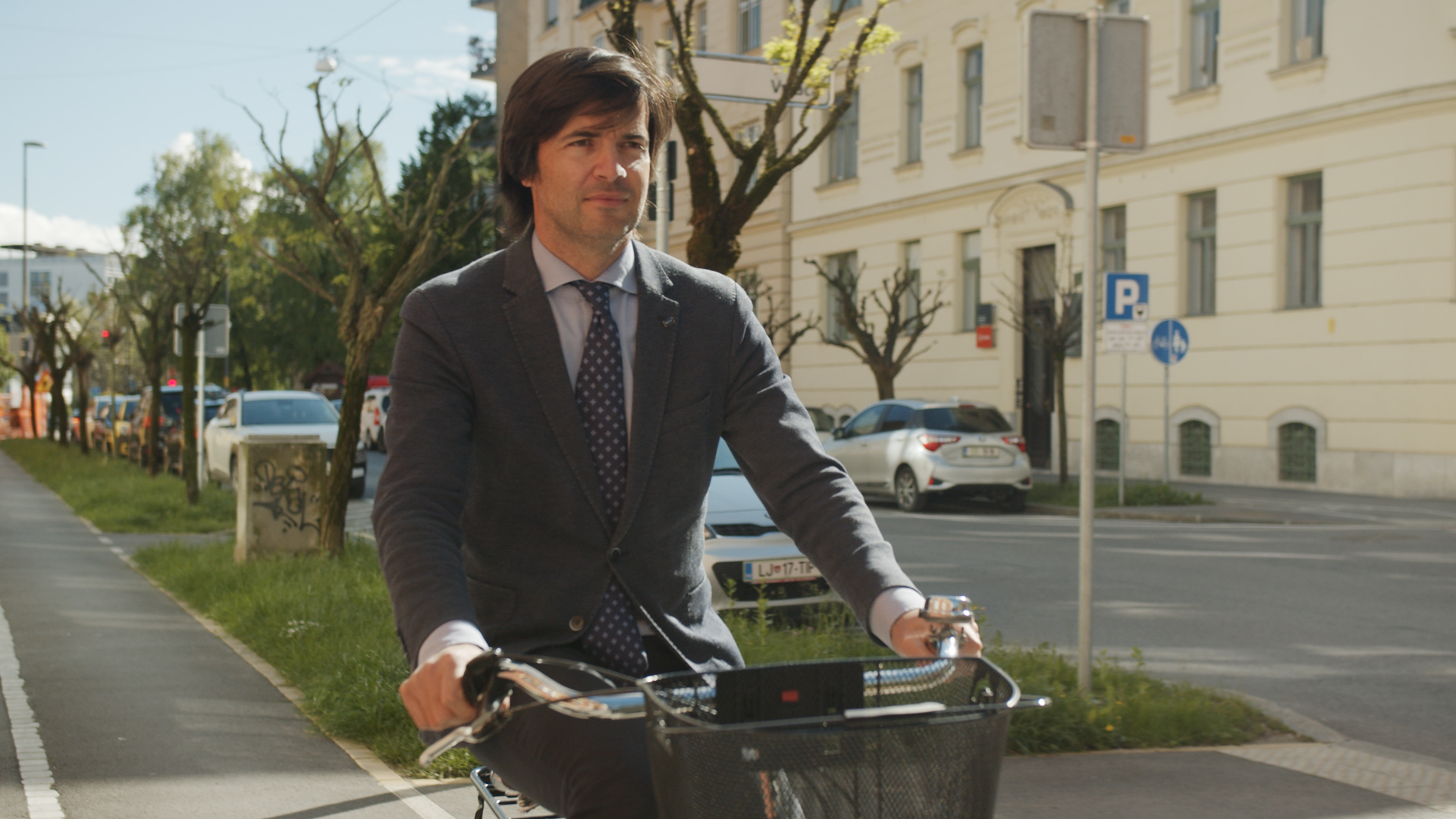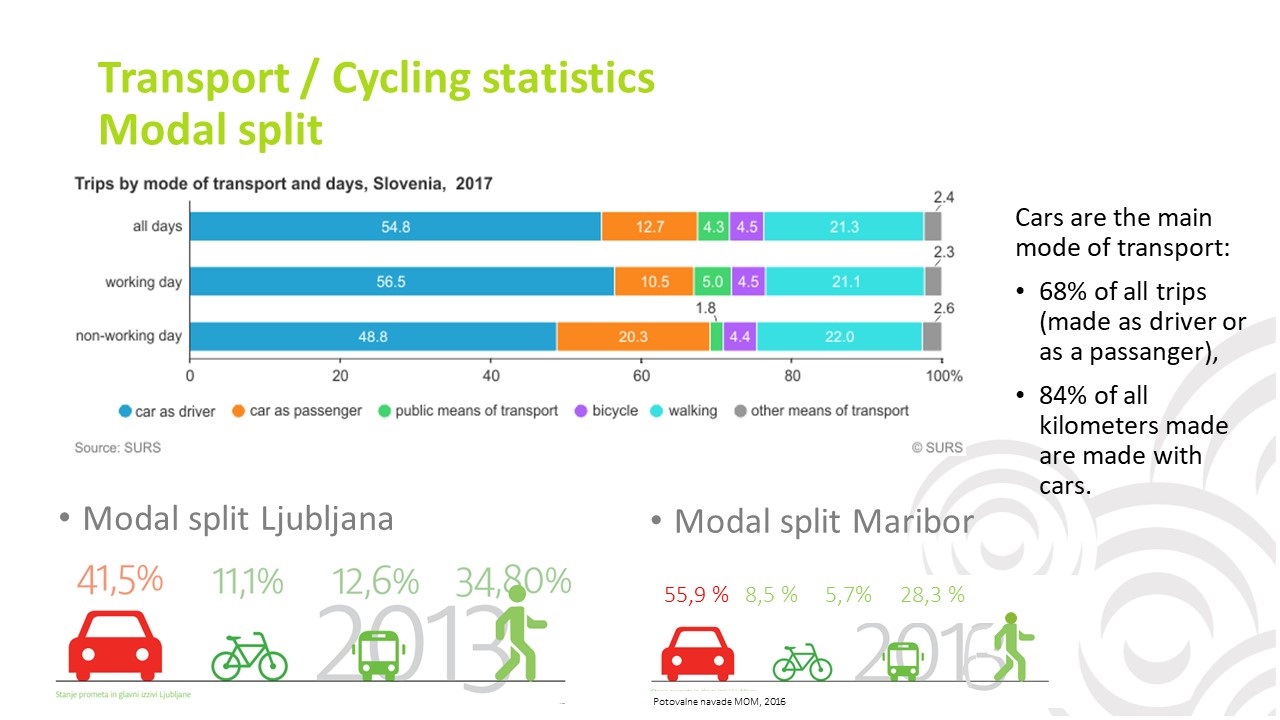Danube Cycle Plans - Covid has had a positive effect on travel behaviour
26-06-2021
The last 18 months brought great changes in mobility. More people on wheels means greater need of safe roads not only for cyclists, but also for other sustainable travel modes. Slovenia is therefore preparing for an assessment and categorization of existing and planned cycling connections. As part of the Danube Cycle Plan project, the new National Cycling Plan for the Development of Cycling Infrastructure will be established.
What are Slovenia's plans for the next period? How does the Ministry of Infrastructure want to support sustainable modes of transport, including cycling? In an interview the topic is discussed with Darko Trajanov, General Director of The Sustainable Mobility and Transport Policy Directorate at the Ministry of Infrastructure, Slovenia.

What is the role of cycling in Slovenia? What were you able to accomplish at the Ministry of Infrastructure in the past with regards to cycling?
Cycling is an important mode of transport, which is encouraged mainly by investments in cycling infrastructure within cities and to hinterland settlements. In the past financial perspective 2014-2020 we supported over 160 projects in the field of cycling infrastructure with a total value of over EUR 350 million, of which EU co-financed just under half of all the funds. We supported over 60 SUMPs (sustainable urban mobility plans), proposed by municipalities, that include also cycling infrastructure. In the last 5 years over 500 km of bicycle connections were planned and built (some still need to be executed), 20 public bicycle rental systems and around 250 new bicycle parking lots have been set up, of which over 8,000 bicycle parking spaces will be provided at 220 railway stations nationwide. We also supported 7 new P+R stops that enable multimodality car-bike, as all of them also have parking spaces for bicycles.
We are also giving increased emphasis to sustainable mobility, both in terms of knowledge, experience, financial resources, and through regulation. Therefore, in 2020 we started preparing the Comprehensive Transport Planning Act, which includes also cycling policies, and is currently in the last phase of inter-ministerial consultation.
Do you have any information whether there was an increase in number of cyclists in the last 5-10 years?
In Slovenia, the main issue is that data is not systematically collected, analyzed, managed and publicly presented. Some data is available on demand from different organizations such as the Agency for public safety, National Agency of Infrastructure, Statistical office, municipalities etc.

In 2017 the modal split for cycling was around 4,4%, whereas cars were still used as the main mode of transport (68% of all trips are made as a car driver or passenger). Bicycle was also mainly used in free time and for daily errands up to 5km.
Unfortunately, there are no up to date data, as due to the COVID-19 pandemic, the Statistical Office of Republic of Slovenia did not conduct any survey of mobility habits in 2020, as it would not be comparable to 2017.
We do however gather data from bicycle counters set-up along some long-distance cycle routes and in our Capital Ljubljana.
During the period 2017 – 2020 the average annual growth of cyclists on 7 cycling routes with monitoring was 8%.
The positive trend in cycling share could be observed in the capital Ljubljana on 4 cyclist counter that count cyclists from 2007 onward. We noted an increase of ca. 45% from 2007 to 2019 at the most frequent corridor of Dunajska street.
Do you also perhaps have any information on whether the increase in number of cyclists for daily mobility also contributed to environmental, health and economic benefits (for eg. reduction of emissions in cities, decrease in the number of motorized vehicles at the peak of the day, improvement of the health of the population due to a healthier lifestyle, increased visits to local shops / services in city centers, increase in sales of bicycles and cycling equipment, etc.)?
The Covid-19 pandemic definitely contributed to the increase of bicycle use as a mean of transport within cities, to avoid personal contact. We are now making effort to return public transport back to “normal” pre-Covid volumes as soon as possible. In the meantime, we have already received new trains, which enable increased capacity and comfort as well as the possibility to take your bike on board.
And what are your plans for the next 5-10 years?
There are several plans for the next 5-10 years. In the field of cycling, we are mainly looking forward to the complete assessment and categorization of existing and planned cycling connections and the preparation of a National Cycling Plan for the development of cycling infrastructure, that we have already started working on within the Danube Cycle Plans project.
How do you, as an employer, promote cycling as a sustainable form of mobility?
The most important thing is that the employer allows the employee to park the bike safely. The rest is an additional incentive to come to work by bike. In recent years, at the initiative of employees, we have arranged a bathroom with a shower, where employees who come to work by bike, even from 20-30 km away, can take a shower and change clothes. New bicycle stands have been set up next to the ministry building in an area protected by video cameras. We are also considering providing even safer parking spaces for bicycles inside the building, in order to enable arrivals to work with better and, of course, more valuable bicycles.
Do you also use the bicycle to commute to work or attend work meetings in Ljubljana city?
Every now and then I bike to work from home, which is approximately 10 km in one direction. Sometimes I also take with me my kids who visit school in Ljubljana. But mainly I use a bicycle to attend work meetings in the city.
